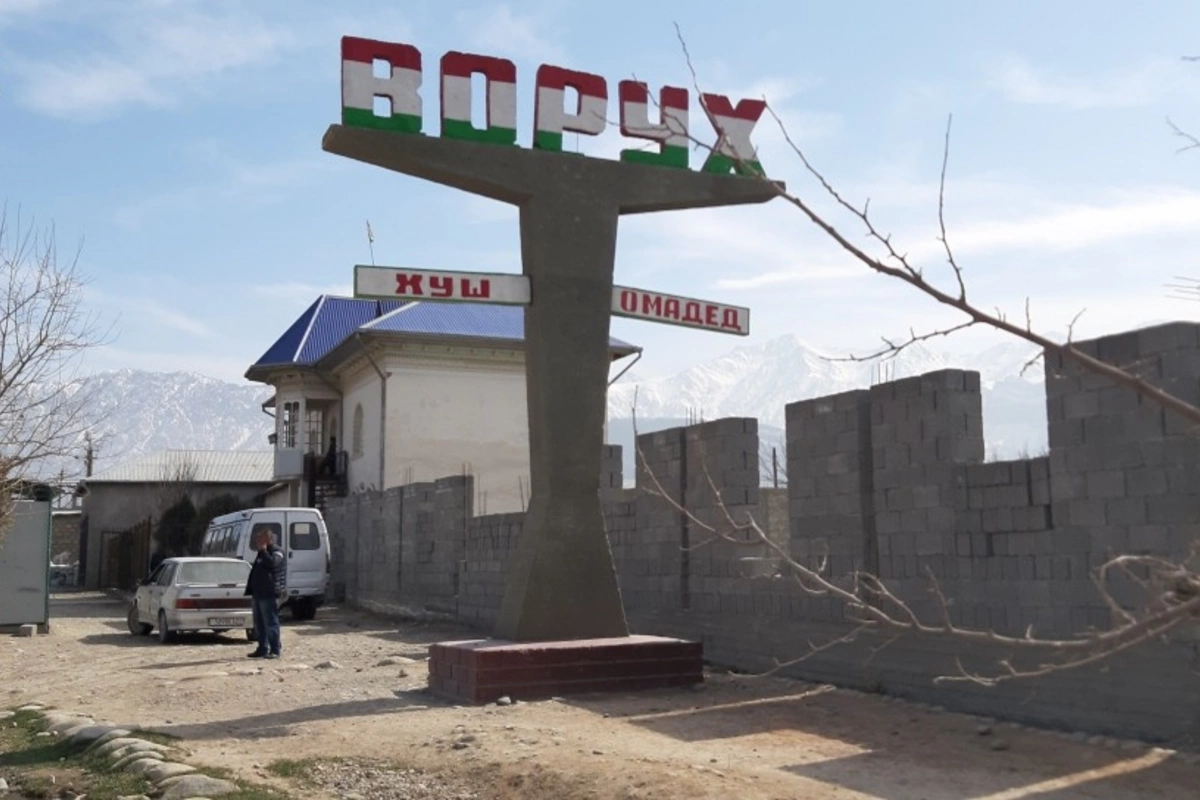
Conversations have focused on key roads and access to remote settlements.
Image: Asia-Plus/old.asiaplustj.info
(Eurasianet) The heads of the security services of Kyrgyzstan and Tajikistan have dropped fresh hints that a border demarcation deal may be coming into focus, raising the prospect of an end to decades of violence-prone unease between the two nations.
Kamchybek Tashiyev, the head of Kyrgyzstan’s State Committee for National Security, or GKNB, and his Tajik counterpart, Saimumin Yatimov, met on December 1 in the Tajik town of Buston for talks that reportedly produced “key decisions” on how to resolve differences over the border.
In remarks to journalists following negotiations, Tashiyev spoke in vague generalities, although he ventured that “we are very close to settling all matters.”
Yatimov was more discursive.
He said that a breakthrough solution had been agreed on how to manage use of the Vorukh-Khojai A'lo road, which crosses Kyrgyz territory and links the mainland of Tajikistan to the densely populated Tajik enclave of Vorukh.
The point where the Kyrgyz and Tajik roads intersect has long served as a flashpoint for confrontations between local residents. When clashes broke out in the past, Kyrgyz communities have been able to dangle the threat of placing Vorukh under a blockade as leverage.
Yatimov gave no details on what had been agreed.
The Tajik security services chief continued, again without dwelling on specifics, to say Kyrgyzstan and Tajikistan have agreed that both countries will enjoy “permanent and uninterrupted” access to lands belonging to them but lying within the confines of the other country.
While for Tajikistan this is a clear allusion to Vorukh, it is less obvious which Kyrgyz territory falls under this description. Possible candidates are Kyrgyz towns such as Arka and Borborduk, which can be reached on winding and uneven Kyrgyz roads that Tajik border troops have periodically threaten to block.
The Kyrgyz-Tajik border extends approximately 980 kilometers. Fraught negotiations on establishing the exact contours of that line have been ongoing since December 2002. At present, around one-third of the border remains undefined.
Some of the strongest indications that this might change soon arrived when the presidents of Kyrgyzstan and Tajikistan met in October and subsequently intimated that a breakthrough in border delimitation negotiations was imminent. A press release on those talks from Tajik President Emomali Rahmon’s office asserted that “special attention was paid to the issues of determining the state border line" and that “agreements were reached on this matter some time ago.”
This sustained positive dialogue marks an important de-escalation from events 2021 and 2022, when incidents that began as localized skirmishes escalated into outright armed conflicts. Dozens of people were killed over four days of fighting in September 2022.
In the wake of that last bout of unrest, the armed forces of both countries have with pointed demonstrativeness worked on increasing their military capabilities, prompting concerns that any future combat could prove even more deadly. This fits a broader historic pattern. Where the kinds of cross-border skirmishes that took place in the 1990s through to the 2010s typically saw the deployment of light firearms at worst, more recent episodes have seen border forces target one another with heavy artillery and even rockets fired from unmanned drones.
Share on social media
